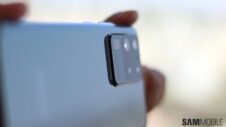Before a device is retail-ready, it undergoes a bevy of tests that ensure that it can survive the daily wear and tear. Samsung, like all manufacturers, conducts a variety of tests to determine what areas need fixing after the design of the handset is finalized. For instance, at Samsung’s test labs, a machine drops the Galaxy S5 from various heights and angles, while a high-speed camera records the damage to the handset. Using this data, Samsung determines which areas to bolster so that the device survives a tumble. Another machine presses the home button thousands of times to check the durability of the button and find out whether it is still usable after significant wear and tear.
Samsung also uses foam-coated walls and ceilings to test the device’s signal strength and gauge the radiation it emits. To test the dust and water resistant nature of the handset, it is placed in a small chamber that inundates the Galaxy S5 with dust particles. In addition to these tests, static electricity, speaker volume and microphone sensitivity tests are undertaken to simulate real-world usage conditions. A lesser known fact is that models targeted at different markets come with different audio sensitivities to account for the ambient noise levels in that region. The result of this stringent testing means that the Galaxy S5 functions the way it is meant to in everyday use.












